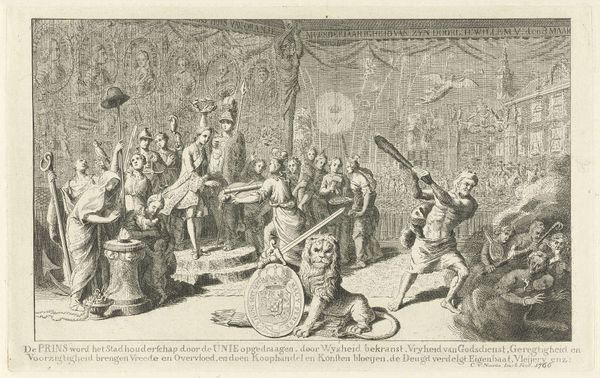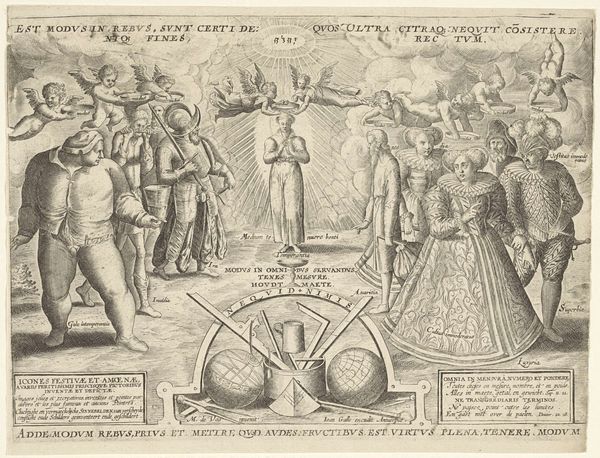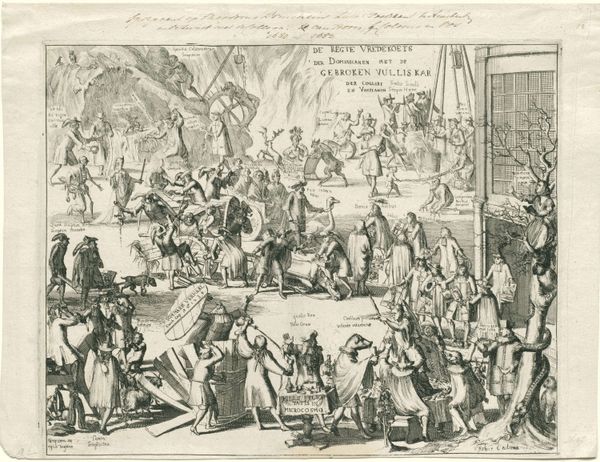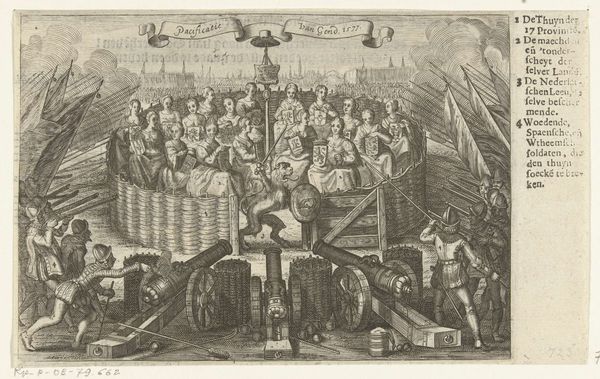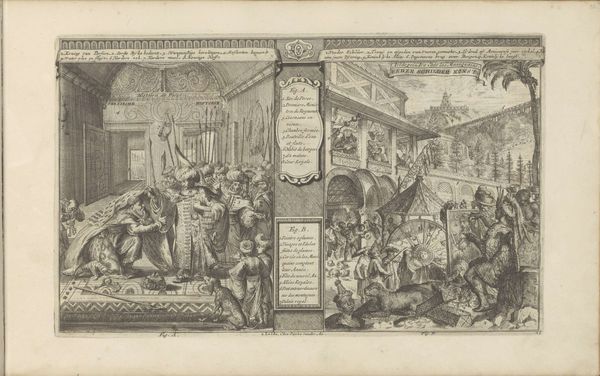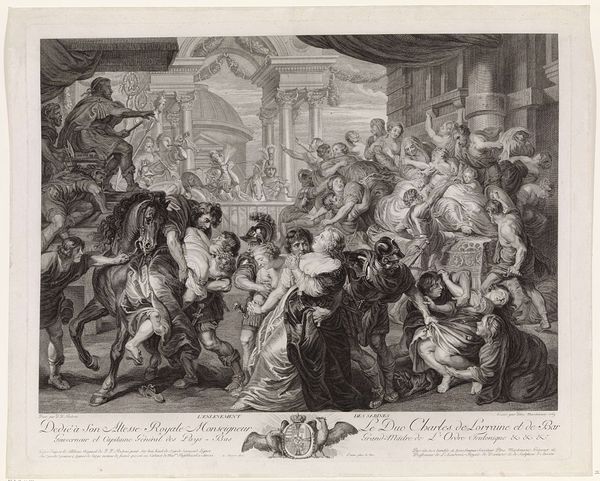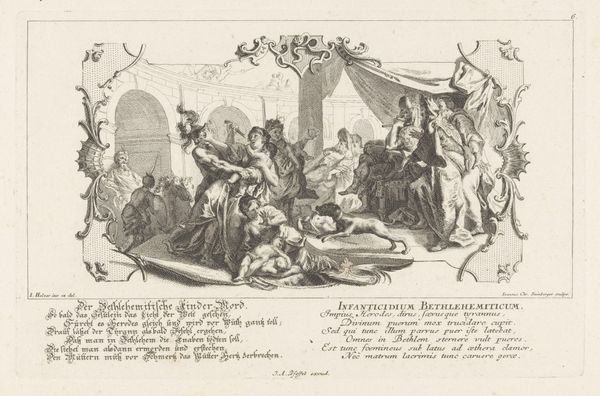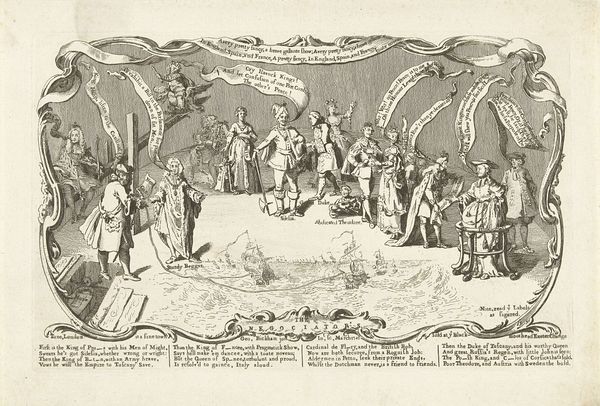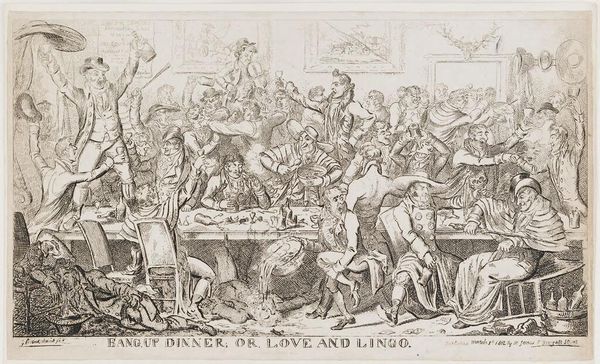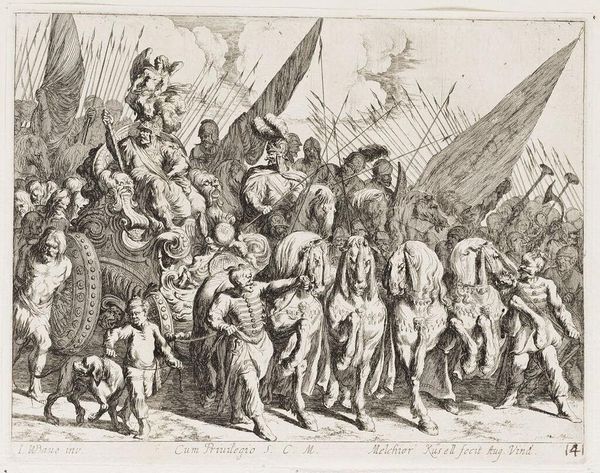
drawing, print, paper, ink, engraving
#
drawing
#
narrative-art
# print
#
paper
#
ink
#
genre-painting
#
history-painting
#
engraving
Dimensions: 343 × 521 mm (image); 406 × 552 mm (sheet)
Copyright: Public Domain
Curator: This is Winslow Homer’s "Pay Day in the Army of the Potomac," likely created around 1863. It's a print, an engraving on paper, currently held at The Art Institute of Chicago. Editor: My first thought? The sheer volume of people represented! The tightly packed crowd at the bottom is contrasted with these almost idealized vignettes floating above. It's… intense. And what medium is this? The marks indicate this must be mass produced somehow. Curator: Indeed, this image was initially published in "Harper's Weekly." Homer, as an artist-reporter, frequently contributed illustrations, informing the broader public about the Civil War and life in the Union Army. Editor: So this wasn’t conceived as fine art in a rarified studio, but made for popular consumption… It completely reframes the discussion. All that ink, transferred from wood to paper... that represents labor, capital and knowledge meeting for the war effort. Curator: Precisely. Consider the narrative Homer crafts. We have a central scene of soldiers lining up for pay. Above, he depicts sending money home, the receipt of letters, suggesting the economic and emotional lifeline this money represents for families. It really touches on the political and social context. Editor: Right. Look at the "A Descent on the Sutler" written at the base of the main body in the print, too. Money hits the hand, but quickly heads back into someone else's coffers for supplies! Also consider that Homer is choosing ink to depict the everyday realities of military existence—how appropriate given the fact that the print will go on to participate in the social reality by helping people conceptualize life during war. Curator: And what's fascinating is how he positions the sutler, or provisioner, alongside these idealized family scenes. He's not shying away from the economic realities—the commodification—of war. The image becomes this meditation on what money means to soldiers in the midst of the conflict. Editor: You're absolutely right. Homer deftly exposes the machinery—material and economic—behind the seemingly simple scene of paying the troops. The image implicates all of those it portrays, asking viewers to re-examine the value of human labor in conflict. It shows just how crucial medium, dissemination and use are when understanding such images from war. Curator: It encourages us to remember how art can serve both as propaganda and truth-telling, as social commentary that asks difficult questions about wartime conditions. Editor: A print might appear common or banal, but understanding that image through materiality opens up a richer field of historical experience that cannot be separated from Winslow Homer's art.
Comments
No comments
Be the first to comment and join the conversation on the ultimate creative platform.
